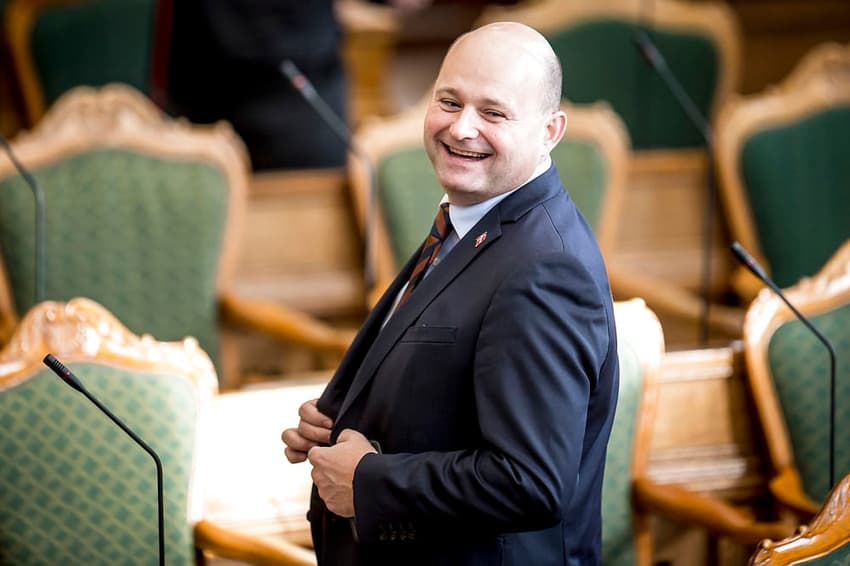Danish Conservatives present major tax cut plan

Denmark’s Conservative party, a partner in the coalition government, on Monday launched a proposal to make tax cuts worth 33 billion kroner (4.4 billion euros).
The party, which has six of the 179 seats in parliament, says it hopes to gain majority backing for the plan over the next two election terms.
The plan would reduce state income from tax by 33 billion kroner. That can be financed in part by funds remaining after all state outgoings are accounted for, the Conservatives say.
The party wants to increase the earnings threshold for the highest band of tax, known in Danish as topskat, to 800,000 kroner annually. The threshold is currently 498,900 kroner and will increase to 513,400 kroner in 2019.
Average annual tax payments should be 8,000 kroner lower and the minimum earnings for paying any tax at all should be increased from 34,000 kroner to 50,000 kroner, the party proposes.
Fellow government party Liberal Alliance, which has a libertarian outlook, called the Conservative plan a “small step in the right direction”.
“But it is nowhere near the level of ambition we believe is necessary for the Danish economy,” Liberal Alliance lead political spokesperson Christina Egelund said.
Both the Conservatives and Liberal Alliance support scrapping inheritance tax.
Meanwhile, the Conservatives want to reduce registration fees on vehicles to 75 percent of current rates, while Liberal Alliance wants these fees to be removed altogether.
READ ALSO: Explained: Denmark's car registration tax
“We thing that registration fees are deeply unfair, especially for those who live outside the range of public transport in rural areas,” Egelund said.
Egelund also said she would like to have seen corporate tax addressed in the Conservative plan.
“We know that the high corporate tax we have is costing us both well-being and productivity,” Egelund said.
The rightwing Danish People’s Party, a parliamentary ally to the government, was critical of the proposal to increase the threshold for the upper tax band.
Other aspects of the plan were praised by the party for rewarding lower earners.
These include a proposal to increase the so-called beskæftigelsesfradraget, a reduction in tax rate available to people in employment.
“This will give improved competitiveness and relieve pressure there may be on wages,” Danish People’s Party finance spokesperson René Christensen said.
“And those with low wages will feel a bigger difference when you are working in percentages,” Christensen said.
Mads Lundby Hansen, lead economist with liberal thinktank Cepos, reacted positively to the proposal.
“I’m pleased that the Conservatives (want to) significantly reduce tax,” Hansen said.
The plan could increase employment by up to 30,000 people, Hansen said, citing also a proposal to cut access to efterløn, a form of social welfare payment available to people over the age of 62 if they have made the relevant social security payments throughout their employment history and fulfil other specific requirements.
Comments
See Also
The party, which has six of the 179 seats in parliament, says it hopes to gain majority backing for the plan over the next two election terms.
The plan would reduce state income from tax by 33 billion kroner. That can be financed in part by funds remaining after all state outgoings are accounted for, the Conservatives say.
The party wants to increase the earnings threshold for the highest band of tax, known in Danish as topskat, to 800,000 kroner annually. The threshold is currently 498,900 kroner and will increase to 513,400 kroner in 2019.
Average annual tax payments should be 8,000 kroner lower and the minimum earnings for paying any tax at all should be increased from 34,000 kroner to 50,000 kroner, the party proposes.
Fellow government party Liberal Alliance, which has a libertarian outlook, called the Conservative plan a “small step in the right direction”.
“But it is nowhere near the level of ambition we believe is necessary for the Danish economy,” Liberal Alliance lead political spokesperson Christina Egelund said.
Both the Conservatives and Liberal Alliance support scrapping inheritance tax.
Meanwhile, the Conservatives want to reduce registration fees on vehicles to 75 percent of current rates, while Liberal Alliance wants these fees to be removed altogether.
READ ALSO: Explained: Denmark's car registration tax
“We thing that registration fees are deeply unfair, especially for those who live outside the range of public transport in rural areas,” Egelund said.
Egelund also said she would like to have seen corporate tax addressed in the Conservative plan.
“We know that the high corporate tax we have is costing us both well-being and productivity,” Egelund said.
The rightwing Danish People’s Party, a parliamentary ally to the government, was critical of the proposal to increase the threshold for the upper tax band.
Other aspects of the plan were praised by the party for rewarding lower earners.
These include a proposal to increase the so-called beskæftigelsesfradraget, a reduction in tax rate available to people in employment.
“This will give improved competitiveness and relieve pressure there may be on wages,” Danish People’s Party finance spokesperson René Christensen said.
“And those with low wages will feel a bigger difference when you are working in percentages,” Christensen said.
Mads Lundby Hansen, lead economist with liberal thinktank Cepos, reacted positively to the proposal.
“I’m pleased that the Conservatives (want to) significantly reduce tax,” Hansen said.
The plan could increase employment by up to 30,000 people, Hansen said, citing also a proposal to cut access to efterløn, a form of social welfare payment available to people over the age of 62 if they have made the relevant social security payments throughout their employment history and fulfil other specific requirements.
Join the conversation in our comments section below. Share your own views and experience and if you have a question or suggestion for our journalists then email us at [email protected].
Please keep comments civil, constructive and on topic – and make sure to read our terms of use before getting involved.
Please log in here to leave a comment.